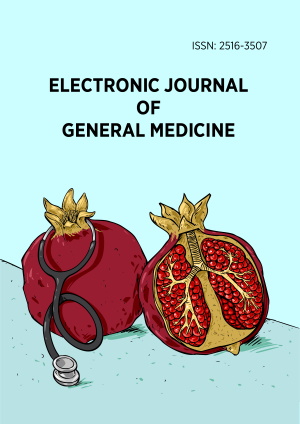Abstract
Background: In recent years, the integration of psychological interventions into the rehabilitation of patients with chronic heart failure (CHF) has become more apparent. The effectiveness of these interventions varies, with some having a positive impact while others showing no effect. It is unclear which psychological interventions are considered effective for patients with heart failure.
Aim: We aimed to examine the impact of psychological interventions, encompassing psychoeducation, positive reinforcement, and stress management, on levels of stress, depression, and life satisfaction in patients with CHF.
Methods: Thirty-six consecutive CHF patients in stable condition (mean age: 56 ± 10 years, left ventricle ejection fraction < 50%) were randomly assigned to the intervention group (IG) (n = 18) or the control group (CG) (n = 18). All participants engaged in a structured rehabilitation program three times a week for a duration of 12 weeks. The IG received additional emotional support through 12 sessions of psychoeducation, stress resilience techniques, and positive behavior reinforcement. Measurements were conducted both pre- and post-intervention, with values expressed as mean and standard deviation.
Results: Following 12 weeks of rehabilitation, the IG demonstrated a substantial reduction in depression rates (from 3.4 [4.0] to 1.6 [2.4], p < 0.01), in contrast to the CG (from 3.6 [3.4] to 4.0 [3.7], p = 0.32). Stress levels were significantly diminished (p < 0.01) in both the IG (from 14.3 [8.6] to 9.1 [7.4]) and the CG (from 13.2 [9.8] to 8.6 [5.9]). Moreover, life satisfaction markedly increased in the IG (from 23.8 [5.2] to 30.8 [3.5], p < 0.01), while it decreased in the CG (from 26.0 [6.91] to 20.2 [6.5], p < 0.01). Noteworthy between-group differences were observed in depression rates and life satisfaction (p < 0.01).
Conclusions: Psychological interventions, alongside a structured exercise rehabilitation program, featuring psychoeducation, stress management techniques, and positive reinforcement, emerges as a potent strategy for alleviating depressive symptoms and enhancing the mental well-being of patients. This underscores the potential of a comprehensive approach that seamlessly integrates both physical and psychological interventions.
License
This is an open access article distributed under the Creative Commons Attribution License which permits unrestricted use, distribution, and reproduction in any medium, provided the original work is properly cited.
Article Type: Research Article
ELECTRON J GEN MED, Volume 22, Issue 4, August 2025, Article No: em661
https://doi.org/10.29333/ejgm/16370
Publication date: 01 Jul 2025
Online publication date: 14 May 2025
Article Views: 1342
Article Downloads: 810
Open Access References How to cite this article
 Full Text (PDF)
Full Text (PDF)